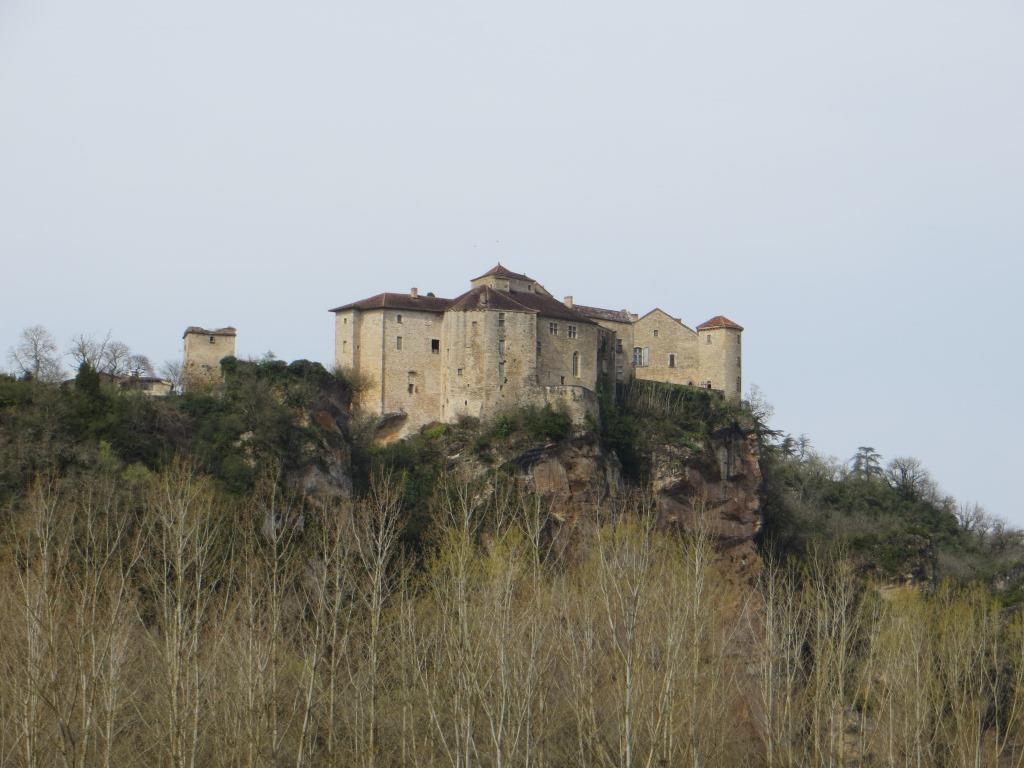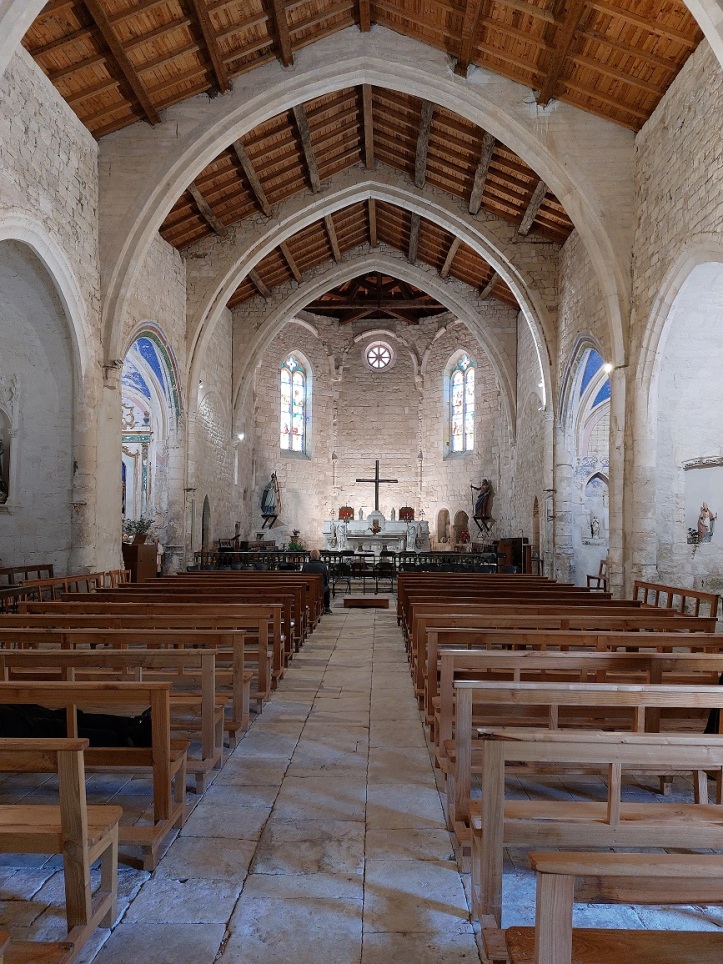Before you arrive in the tiny village of Vieux in the Tarn, you see its 23 m (75 ft) high church tower – surely too imposing for such a little place? But Vieux’ size today belies its former importance as a pilgrimage site.
We spent last weekend in this well-preserved village rehearsing with a 50-strong choir before singing in a concert on Sunday, featuring works ranging from Durante to Fauré. Our conductor was Mark Opstad, whose youth choir, la Maîtrise de Toulouse, has a reputation as one of the best in France. I hasten to add that we were not singing with the youth choir, and ‘young’ is not an adjective you would apply to most of the 50!
Villages of the Vère
Vieux is one of a string of villages threaded along the Vère Valley, including the Plus Beaux Villages of Castelnau-de-Montmiral, Puycelsi and Bruniquel. Although only 45 km from us, the countryside is quite different. You are in the heart of the Gaillac vineyards, surrounded by rolling hills. Pale stone houses with pastel-coloured shutters and Roman tile roofs predominate.
How can a village end up with a name like Vieux (Old)? Like many such names, it’s a corruption of an earlier one. The original name was Vius, which I believe is Occitan, meaning fresh or lively. It can also mean ‘jaillissant’ in French (gushing), so perhaps springs existed in the area. A brook, la Sesquière, flows right through the village and feeds the former lavoir (washing place).
Pilgrimage site
Until the 15th century, Vieux was the most important pilgrimage site in the Albigeois region. The relics of three saints, Amarand, Eugène and Carissime, reposed in the church. People flocked to Vieux from miles around to visit them, until the Bishop transferred the relics to the cathedral in Albi for safekeeping. The period between the 11th and the 13th centuries was especially prosperous for the village and its monastery.
In common with other villages in the area, Vieux had a turbulent history. Its prosperity and its position on a busy route made it an obvious target. Simon de Montfort sacked the original church in 1212 during the Albigensian crusades. In the 14th century, the English raided the village on several occasions during the Hundred Years War.

The current church dates from the 16th century, but it suffered damage several times during the Wars of Religion between Catholics and Protestants. During the Revolution, the church was used as a wine cellar before being abandoned to the elements. Repairs took place in the 19th century and again in the 1960s. The church became a place of worship again in 1970.
Today, the building is an absolute gem. The chapel under the bell tower boasts 14th-century wall paintings from a previous church, depicting scenes from the Passion (see the shot below). The window really does suffuse the chapel with that radioactive green glow. In fact, it’s even greener in the flesh.
The stained-glass windows are the work of expert glazier Henri Fauré of Gaillac in 1882.
Decline and rise
Despite its attractions, Vieux was no stranger to rural depopulation. From a peak of 504 in 1846, the population had dropped to 155 by 1999. From there, it has grown steadily again until reaching 228 in 2021.
The inhabitants kept a low profile during the weekend. However, it was good to note that families obviously live there. A father and his small children pedalled up and down the quiet road between the church and the Mairie, playing games and enjoying the warm sunshine that smiled on us for a change this year.
Vieux has its legends, too. Outside the village, beside the River Vère, stands a huge Bronze Age menhir (standing stone), dating back 4,000-5,000 years and weighing about 15 tonnes. One of the saints of Vieux, Sainte-Carissime, is reputed to have brought it there on a silk cloth. Why? Legend is silent on the matter. Suffice it to say that the job of saints is to perform miracles.
If you take the route along the Vère between Gaillac and Bruniquel, do stop briefly in Vieux if you have the time. Note that there are no bars, restaurants or shops there, so arrange to eat in one of the villages further on (Castelnau or Puycelsi) or take a picnic with you.
Gaillac Tourist Office website.
You might also like these related posts:
Copyright © Life on La Lune 2024. All rights reserved.











What a lovely spot – thanks for the introduction
LikeLiked by 1 person
It is, and like all these places it rewards a little research into its history.
LikeLiked by 1 person
That’s often the case in France
LikeLiked by 1 person
What a lovely old church in a beautifully preserved village! Ironic that the name somehow morphed from youthful to old.
LikeLiked by 1 person
It’s a pleasant place. If I’m honest, perhaps a little too sanitised, but it’s good to see that the inhabitants take such good care of it. Interesting how names change over the centuries into something completely different!
P.S. Sorry to read about your bout of shingles. I haven’t had a moment to comment, but I know from friends’ and relatives’ experiences what a painful illness it is. I hope you’re now over it.
LikeLike